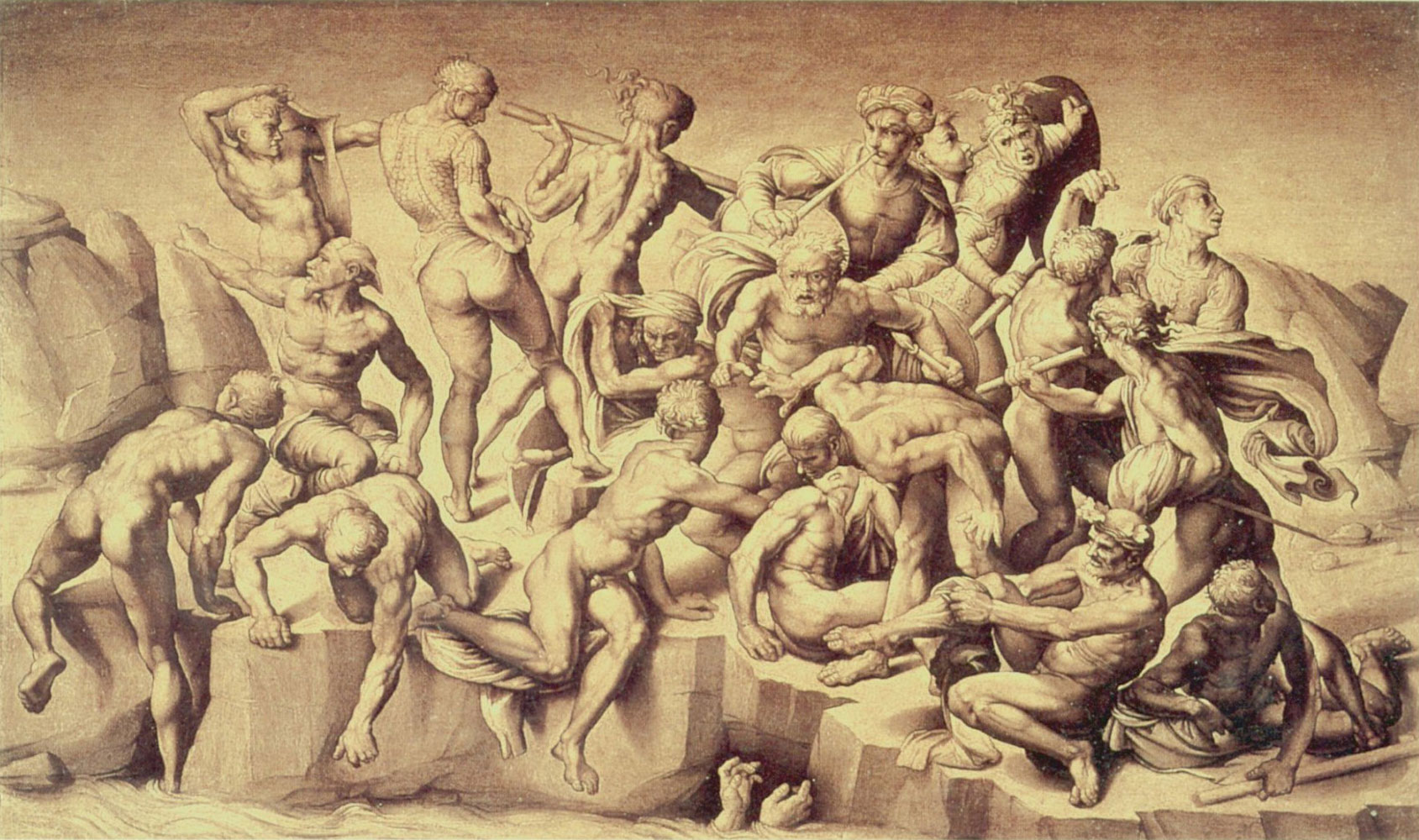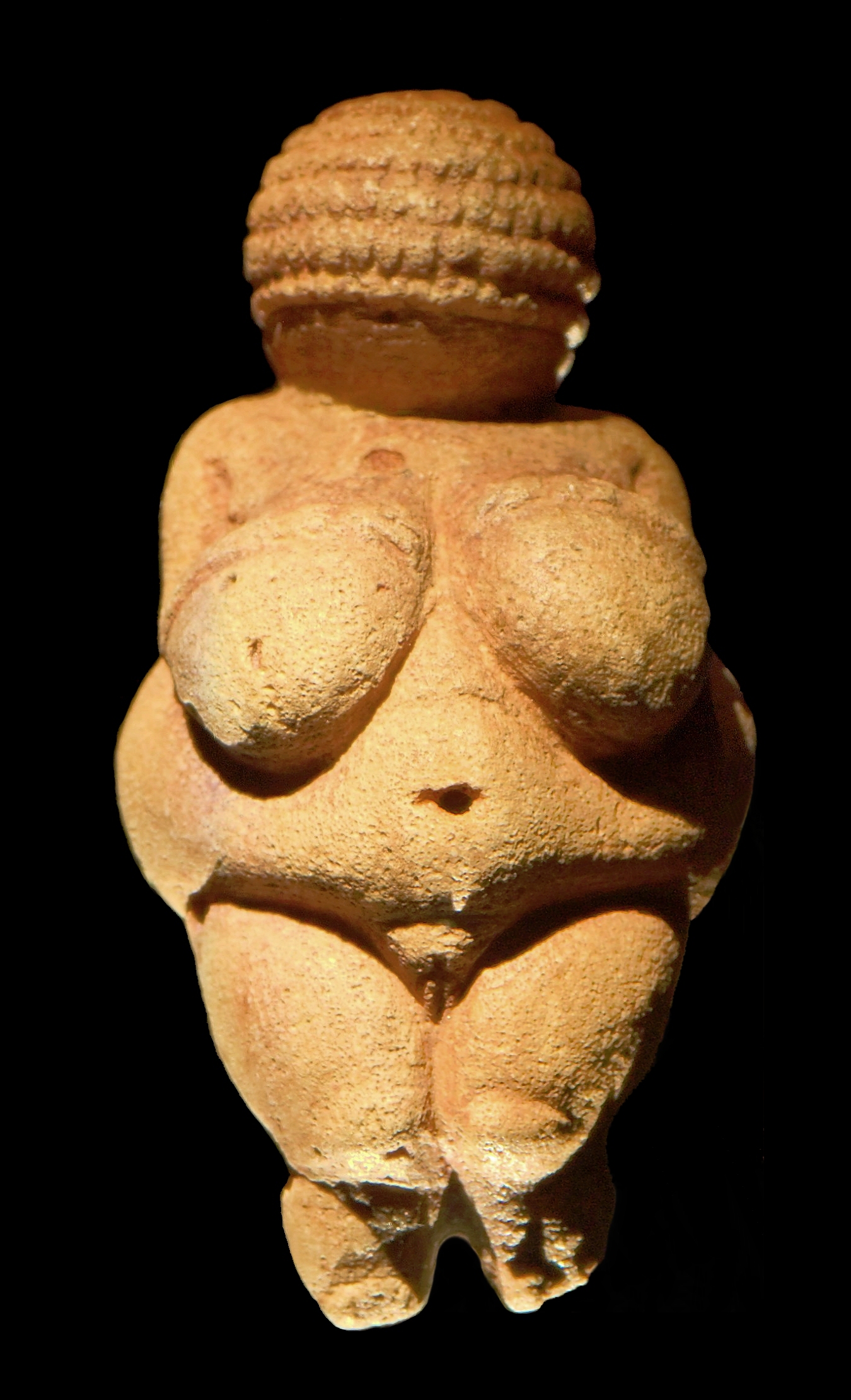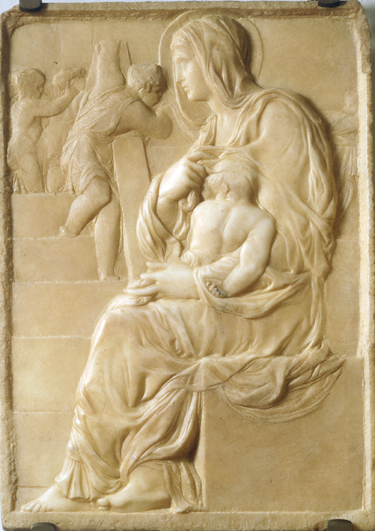|
Mannerism
Mannerism is a style in European art that emerged in the later years of the Italian High Renaissance around 1520, spreading by about 1530 and lasting until about the end of the 16th century in Italy, when the Baroque style largely replaced it. Northern Mannerism continued into the early 17th century. Mannerism encompasses a variety of approaches influenced by, and reacting to, the harmonious ideals associated with artists such as Leonardo da Vinci, Raphael, Vasari, and early Michelangelo. Where High Renaissance art emphasizes proportion, balance, and ideal beauty, Mannerism exaggerates such qualities, often resulting in compositions that are asymmetrical or unnaturally elegant. Notable for its artificial (as opposed to naturalistic) qualities, this artistic style privileges compositional tension and instability rather than the balance and clarity of earlier Renaissance painting. Mannerism in literature and music is notable for its highly florid style and intellectual sophist ... [...More Info...] [...Related Items...] OR: [Wikipedia] [Google] [Baidu] |
Northern Mannerism
Northern Mannerism is the form of Mannerism found in the visual arts north of the Alps in the 16th and early 17th centuries. Styles largely derived from Italian Mannerism were found in the Netherlands and elsewhere from around the mid-century, especially Mannerist ornament in architecture; this article concentrates on those times and places where Northern Mannerism generated its most original and distinctive work. The three main centres of the style were in France, especially in the period 1530–1550, in Prague from 1576, and in the Netherlands from the 1580s—the first two phases very much led by royal patronage. In the last 15 years of the century, the style, by then becoming outdated in Italy, was widespread across northern Europe, spread in large part through prints. In painting, it tended to recede rapidly in the new century, under the new influence of Caravaggio and the early Baroque, but in architecture and the decorative arts, its influence was more sustained. Backgro ... [...More Info...] [...Related Items...] OR: [Wikipedia] [Google] [Baidu] |
Antwerp Mannerism
Antwerp Mannerism refers to the style of a group of largely anonymous painters active in the southern Netherlands, principally in Antwerp, in roughly the first three decades of the 16th century. The movement marks the tail end of Early Netherlandish painting and an early phase within Dutch and Flemish Renaissance painting. The style bore no relation to Italian Mannerism, which it mostly predates by a few years, but the name suggests that it was a reaction to the "classic" style of the earlier Flemish painters, just as the Italian Mannerists were reacting to, or trying to go beyond, the classicism of High Renaissance art. The Antwerp Mannerists' style is certainly "mannered", and "characterized by an artificial elegance. Their paintings typically feature elongated figures posed in affected, twisting, postures, colorful ornate costumes, fluttering drapery, Italianate architecture decorated with grotesque ornament, and crowded groups of figures...". Joseph Koerner notes "a d ... [...More Info...] [...Related Items...] OR: [Wikipedia] [Google] [Baidu] |
Art Of Europe
The art of Europe, also known as Western art, encompasses the history of visual art in Europe. European prehistoric art started as mobile Upper Paleolithic rock and cave painting and petroglyph art and was characteristic of the period between the Paleolithic and the Iron Age. Written histories of European art often begin with the Aegean civilizations, dating from the 3rd millennium BC. However a consistent pattern of artistic development within Europe becomes clear only with Ancient Greek art, which was adopted and transformed by Rome and carried; with the Roman Empire, across much of Europe, North Africa and Western Asia. The influence of the art of the Classical period waxed and waned throughout the next two thousand years, seeming to slip into a distant memory in parts of the Medieval period, to re-emerge in the Renaissance, suffer a period of what some early art historians viewed as "decay" during the Baroque period, to reappear in a refined form in Neo-ClassicismMur ... [...More Info...] [...Related Items...] OR: [Wikipedia] [Google] [Baidu] |
High Renaissance
In art history, the High Renaissance was a short period of the most exceptional artistic production in the Italian states, particularly Rome, capital of the Papal States, and in Florence, during the Italian Renaissance. Most art historians state that the High Renaissance started between 1490 and 1500, and ended in 1520 with the death of Raphael, although some say the High Renaissance ended about 1525, or in 1527 with the Sack of Rome (1527), Sack of Rome by the mutinous army of Charles V, Holy Roman Emperor, or about 1530. The best-known exponents of painting, sculpture and architecture of the High Renaissance include Leonardo da Vinci, Michelangelo, Raphael, and Bramante. In the 21st century, the use of the term has been frequently criticized by some academic art historians for oversimplifying artistic developments, ignoring historical context, and focusing only on a few iconic works. Origin of term The art historian Jill Burke was the first to trace the historical origins of t ... [...More Info...] [...Related Items...] OR: [Wikipedia] [Google] [Baidu] |
Raphael
Raffaello Sanzio da Urbino (; March 28 or April 6, 1483April 6, 1520), now generally known in English as Raphael ( , ), was an Italian painter and architect of the High Renaissance. List of paintings by Raphael, His work is admired for its clarity of form, ease of composition, and visual achievement of the Platonism in the Renaissance, Neoplatonic ideal of human grandeur. Together with Leonardo da Vinci and Michelangelo, he forms the traditional trinity of great masters of that period. His father Giovanni Santi was court painter to the ruler of the small but highly cultured city of Urbino. He died when Raphael was eleven, and Raphael seems to have played a role in managing the family workshop from this point. He probably trained in the workshop of Pietro Perugino, and was described as a fully trained "master" by 1500. He worked in or for several cities in north Italy until in 1508 he moved to Rome at the invitation of Pope Julius II, to work on the Apostolic Palace at Vatican ... [...More Info...] [...Related Items...] OR: [Wikipedia] [Google] [Baidu] |
Baroque
The Baroque ( , , ) is a Western Style (visual arts), style of Baroque architecture, architecture, Baroque music, music, Baroque dance, dance, Baroque painting, painting, Baroque sculpture, sculpture, poetry, and other arts that flourished from the early 17th century until the 1750s. It followed Renaissance art and Mannerism and preceded the Rococo (in the past often referred to as "late Baroque") and Neoclassicism, Neoclassical styles. It was encouraged by the Catholic Church as a means to counter the simplicity and austerity of Protestant architecture, art, and music, though Lutheran art#Baroque period, Lutheran Baroque art developed in parts of Europe as well. The Baroque style used contrast, movement, exuberant detail, deep color, grandeur, and surprise to achieve a sense of awe. The style began at the start of the 17th century in Rome, then spread rapidly to the rest of Italy, France, Spain, and Portugal, then to Austria, southern Germany, Poland and Russia. By the 1730s, i ... [...More Info...] [...Related Items...] OR: [Wikipedia] [Google] [Baidu] |
Michelangelo
Michelangelo di Lodovico Buonarroti Simoni (6March 147518February 1564), known mononymously as Michelangelo, was an Italian sculptor, painter, architect, and poet of the High Renaissance. Born in the Republic of Florence, his work was inspired by models from classical antiquity and had a lasting influence on Western art. Michelangelo's creative abilities and mastery in a range of artistic arenas define him as an archetypal Renaissance man, along with his rival and elder contemporary, Leonardo da Vinci. Given the sheer volume of surviving correspondence, sketches, and reminiscences, Michelangelo is one of the best-documented artists of the 16th century. He was lauded by contemporary biographers as the most accomplished artist of his era. Michelangelo achieved fame early. Two of his best-known works, the ''Pietà (Michelangelo), Pietà'' and ''David (Michelangelo), David'', were sculpted before the age of 30. Although he did not consider himself a painter, Michelangelo created ... [...More Info...] [...Related Items...] OR: [Wikipedia] [Google] [Baidu] |
Parmigianino - Madonna Dal Collo Lungo - Google Art Project
Girolamo Francesco Maria Mazzola (11 January 150324 August 1540), also known as Francesco Mazzola or, more commonly, as Parmigianino (, , ; "the little one from Parma"), was an Italian Mannerist painter and printmaker active in Florence, Rome, Bologna, and his native city of Parma. His work is characterized by a "refined sensuality" and often elongation of forms and includes '' Vision of Saint Jerome'' (1527) and the iconic if somewhat anomalous '' Madonna with the Long Neck'' (1534), and he remains the best known artist of the first generation whose whole careers fall into the Mannerist period. His prodigious and individual talent has always been recognised, but his career was disrupted by war, especially the Sack of Rome in 1527, three years after he moved there, and then ended by his death at 37. He produced outstanding drawings, and was one of the first Italian painters to experiment with printmaking himself. While his portable works have always been keenly collected and ... [...More Info...] [...Related Items...] OR: [Wikipedia] [Google] [Baidu] |
John Shearman
John Kinder Gowran Shearman (pronounced "Sherman"; 24 June 1931 – 11 August 2003) was an English art historian who also taught in America. He was a specialist in Italian Renaissance painting, described by his colleague James S. Ackerman as "the leading scholar of Italian Renaissance painting", who published several influential works, but whose expected major book on Quattrocento painting, for the Penguin/Yale History of Art series (commissioned in 1984, and still a gap in the series in 2019), never appeared.Independent However, what is widely acknowledged as his most influential book, on the concept of Mannerism, published in 1967, is still in print. Early life and education Born in 1931 to Charles E. G. Shearman, a British army brigadier, and Evelyn Shearman (née White) in Aldershot, Hampshire, John Shearman was educated in Surrey at St Edmund's School, Hindhead, and Felsted School in Essex. After completing his two year National Service in Germany, he took up a place at ... [...More Info...] [...Related Items...] OR: [Wikipedia] [Google] [Baidu] |
Laurentian Library
The Laurentian Library (Biblioteca Medicea Laurenziana or BML) is a historic library in Florence, Italy, containing more than 11,000 manuscripts and 4,500 early printed books. Built in a cloister of the Medicean Basilica di San Lorenzo di Firenze under the patronage of the Medici pope Clement VII, the library was built to emphasize that the Medici were no longer just merchants but members of intelligent and ecclesiastical society. It contains the manuscripts and books belonging to the private library of the Medici family. The library building is renowned for its architecture that was designed by Michelangelo and is an example of Mannerism.Fazio, Michael; Moffett, Marian; Wodehouse, Lawrence, ''Buildings across Time'' (London: Lawrence King Publishing Ltd, 2009), pp. 308–310.Lotz, Wolfgang; Howard, Deborah, ''Architecture in Italy, 1500–1600'' (New Haven: Yale University Press, 1995), pp. 91–94. All of the book-bound manuscripts in the library are identified in its ''Codex Laur ... [...More Info...] [...Related Items...] OR: [Wikipedia] [Google] [Baidu] |
Style (visual Arts)
In the visual arts, style is a "...distinctive manner which permits the grouping of works into related categories" or "...any distinctive, and therefore recognizable, way in which an act is performed or an artifact made or ought to be performed and made". Style refers to the visual appearance of a work of art that relates to other works with similar aesthetic roots, by the same artist, or from the same period, training, location, "school", art movement or archaeological culture: "The notion of style has long been historian's principal mode of classifying works of art". Style can be divided into the general style of a period, country or cultural group, group of artists or art movement, and the individual style of the artist within that group style. Divisions within both types of styles are often made, such as between "early", "middle" or "late". In some artists, such as Picasso for example, these divisions may be marked and easy to see; in others, they are more subtle. Style ... [...More Info...] [...Related Items...] OR: [Wikipedia] [Google] [Baidu] |
Petrarch
Francis Petrarch (; 20 July 1304 – 19 July 1374; ; modern ), born Francesco di Petracco, was a scholar from Arezzo and poet of the early Italian Renaissance, as well as one of the earliest Renaissance humanism, humanists. Petrarch's rediscovery of Cicero's letters is often credited with initiating the 14th-century Italian Renaissance and the founding of Renaissance humanism. In the 16th century, Pietro Bembo created the model for the modern Italian language based on Petrarch's works, as well as those of Giovanni Boccaccio, and, to a lesser extent, Dante Alighieri. Petrarch was later endorsed as a model for Italian style by the . Petrarch's sonnets were admired and imitated throughout Europe during the Renaissance and became a model for lyrical poetry. He is also known for being the first to develop the concept of the "Dark Ages (historiography), Dark Ages". [...More Info...] [...Related Items...] OR: [Wikipedia] [Google] [Baidu] |











